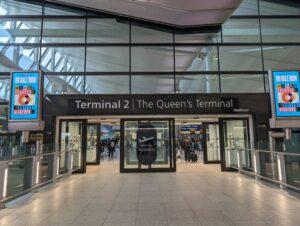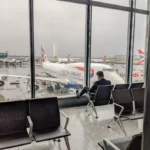Airports are high traffic, high touch environments that demand exceptional cleaning standards. From bustling terminals to crowded restrooms, cleanliness is not just about aesthetics, it’s a matter of health, safety, and customer satisfaction. In this blog, we dive into effective airport cleaning strategies and share expert tips for maintaining a pristine airport environment.
Why Airport Cleaning Matters
- First Impressions Count: The airport is the first and last place travellers experience in a city or country.
- Health & Hygiene: With global travellers, maintaining sanitation reduces the spread of Covid, viruses and pathogens.
- Safety Compliance: Adherence to regulatory standards is critical, especially post-pandemic.
- Operational Efficiency: Clean, organized areas reduce hazards and improve workflow for both passengers and staff.
Core Areas That Need Regular Attention
- Terminals & Waiting Areas
- Dust and vacuum daily.
- Disinfect high-touch surfaces: kiosks, handrails, seats, and armrests.
- Spot clean carpets and hard floors multiple times a day.
- Restrooms
- Clean and disinfect frequently
- Monitor soap, toilet paper, and sanitizer levels.
- Use hands-free fixtures where possible to minimize touchpoints.
- Security Checkpoints
- Disinfect trays, belts, and touchscreens frequently.
- Provide wipes or hand sanitizer at each station.
- Food Courts & Lounges
- Clear tables and sanitize after every use.
- Deep-clean floors and wipe down menus, condiment stations, and counters.
- Airbridges & Boarding Gates
- Vacuum and mop floors regularly.
- Disinfect handrails, door handles, and check-in devices.
- Baggage Claims & Trolleys
- Wipe down trolleys with disinfectant daily.
- Clean baggage belts and surrounding areas multiple times a day.
Professional Cleaning Tips for Airport Facility Managers
- Implement a Zone-Based Cleaning System
Divide the airport into zones (e.g., terminals, gates, food areas) and assign teams to specific zones with checklists. This improves accountability and coverage.
- Use Electrostatic Sprayers
For large areas, electrostatic disinfection ensures even coverage of hard-to-reach surfaces with minimal downtime.
- Install Smart Sensors
Monitor restroom supplies, foot traffic, and waste levels using IoT devices to trigger timely cleaning and refilling.
- Train Staff Thoroughly
Create standardized training programs for all cleaning staff that cover:
- Proper use of PPE
- Safe chemical handling
- Emergency spill procedures
- Infection control best practices
- Adopt Green Cleaning Products
Eco-friendly, non-toxic products protect workers and travellers while supporting sustainability goals.
- Use Color-Coded Cleaning Tools
Assign specific colours for cloths, mops, and buckets (e.g., red for toilets, blue for general surfaces) to avoid cross-contamination.
- Schedule Off-Hour Deep Cleans
Daily surface cleaning is critical, but deep cleaning should occur at night or during low-traffic windows. This includes:
- Steam cleaning carpets
- Polishing floors
- HVAC and duct sanitation
- Emphasize Touch-Free Solutions
Install automatic doors, faucets, soap dispensers, and flushing systems to reduce contamination risks.
- Audit and Document Everything
Keep logs of cleaning routines, incidents, and inspections. Regular audits identify gaps and foster continuous improvement.
- Communicate with Passengers
Use signage and digital boards to inform travellers of cleaning schedules and encourage hygiene (e.g., “This area is sanitized every 30 minutes”).
The Future of Airport Cleaning
With AI-powered robotics, UV disinfection, and real-time monitoring becoming more accessible, the future of airport sanitation is smarter, faster, and safer. Airport companies that invest in innovation and training now will not only meet today’s hygiene standards but exceed tomorrow’s expectations.
Final Thoughts
Airport cleaning is a behind-the-scenes powerhouse that shapes the passenger experience and safeguards public health. By adopting structured processes, modern tools, and well-trained staff, airport facilities can maintain world-class cleanliness with efficiency and consistency.
Remember: In aviation, cleanliness is more than a service—it’s a statement of trust and excellence.
Contact Swift Clean 247 for your commercial cleaning needs.


